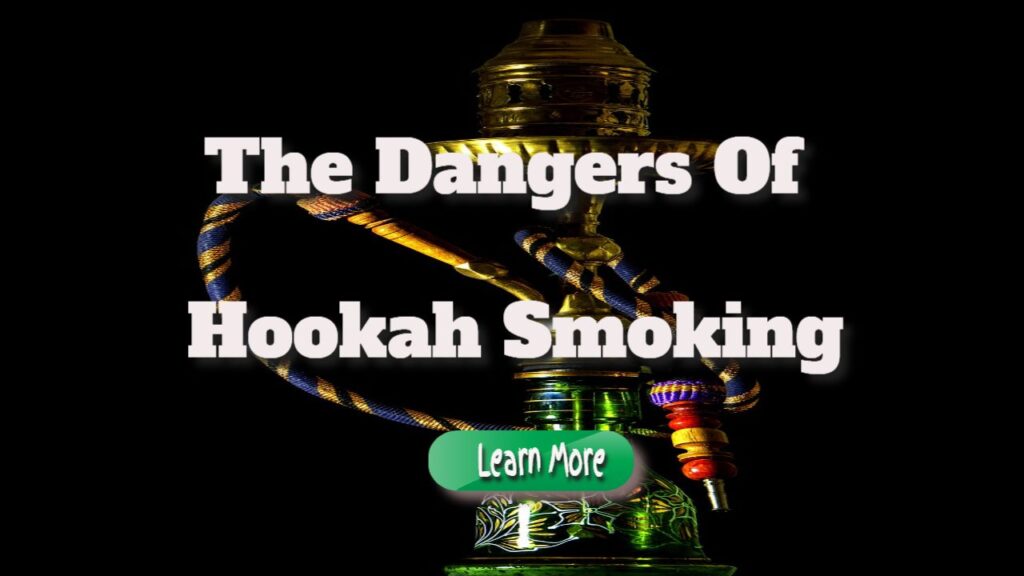Discover the Alarming Health Risks Linked to Hookah Smoking
Engaging in hookah smoking presents serious health hazards that are on par with those related to traditional cigarettes and other tobacco products. There exists a widespread misconception that hookah is a safer option, largely due to its enticing flavors and aromatic qualities. However, the truth is that this belief is fundamentally flawed. Many users presume that the infrequent enjoyment of hookah reduces the health risks typically associated with smoking. This notion is dangerously misleading; no form of tobacco use can be deemed completely safe. The health implications of hookah smoking are serious and include an elevated risk of developing various types of cancer, cardiovascular diseases, and chronic respiratory illnesses. Understanding these risks is essential for individuals aiming to make informed and healthier choices regarding their tobacco consumption habits.
Understanding Hookah: Essential Facts and Insights
Hookah, known by a variety of names such as narghile, argileh, shisha, hubble-bubble, and goza, serves as a device designed for smoking flavored and sweetened tobacco. Typically, the structure of a hookah is intricate, featuring a water chamber, a bowl for tobacco, and one or multiple flexible hoses that facilitate simultaneous inhalation by several users. The tobacco used is often enriched with ingredients like molasses, fruit pulp, or honey, and flavored with enticing options such as coconut, mint, or coffee, significantly enhancing its attractiveness, especially to younger demographics. Though hookah can also be used for smoking other substances like marijuana and hashish, it is crucial to acknowledge its historical roots, which trace back to India or Persia around the 1500s. Since that time, hookah has gained immense popularity across the globe, frequently glamorized in various social settings, which can further obscure its potential health risks.
How Hookah Works: Mechanisms and Health Implications
The operation of a hookah involves filling a bowl with flavored tobacco, which is then covered with burning charcoal. This setup is separated by a perforated aluminum foil that allows the heat to pass while preventing direct contact between the tobacco and the charcoal. Contrary to common beliefs, smoking hookah does not eliminate nicotine or the harmful toxins contained in tobacco. Even though the water in the hookah cools the smoke, it fails to filter out the toxic substances, meaning that users are still inhaling numerous harmful compounds. Therefore, the carcinogenic properties inherent in the tobacco remain intact, exposing users to significant health risks. Gaining a comprehensive understanding of how hookah operates is vital for grasping the potential dangers associated with its use and the health implications tied to it.
Recognizing the Dangerous Carcinogens Present in Hookah Smoke
The smoke produced by water pipes, including hookahs, is laced with many carcinogens that are also found in cigarette smoke. Some of these harmful substances include Acetaldehyde, Acrolein, Arsenic, Cadmium, Carbon monoxide (CO), Chromium, Cobalt, Formaldehyde, Lead, Nickel, and Polonium 210, a radioactive isotope. While some brands of hookah tobacco may advertise themselves as tar-free, this assertion is misleading; tar is inevitably produced when tobacco is smoked or heated, which occurs during hookah sessions. This misunderstanding can result in the erroneous conclusion that hookah tar is less harmful than that of cigarettes. In truth, the charcoal used to heat the tobacco introduces additional health risks, including carbon monoxide, heavy metals, and various carcinogenic compounds known as polyaromatic hydrocarbons, which collectively exacerbate the health risks faced by hookah smokers.
Comparative Analysis of Nicotine Levels in Cigarettes and Hookah
When evaluating the nicotine content in tobacco products, an average manufactured cigarette typically contains between 7 and 22 milligrams (mg) of nicotine, with smokers absorbing approximately 1 mg per cigarette. In stark contrast, a single session of hookah smoking can expose the smoker to nicotine levels equivalent to that of an entire pack of 20 cigarettes. This significant exposure to nicotine greatly increases the potential for addiction, making hookah smoking as addictive as traditional cigarette use. During a 45-minute hookah session, a smoker may inhale around 90,000 milliliters (ml) of smoke, which is vastly greater than the 500 to 600 ml that a cigarette smoker typically inhales. This disparity indicates that hookah smokers are exposed to nine times more carbon monoxide and 1.7 times the nicotine compared to their counterparts who smoke cigarettes. Additionally, the nature of hookah smoking, which often involves deeper and longer inhalations, exacerbates the intake of other harmful substances, including tar and heavy metals.
Assessing the Health Risks Linked to Hookah Smoking
The health risks associated with hookah smoking are alarmingly comparable to those linked to cigarette smoking. These risks encompass a heightened probability of developing various forms of cancer, fertility complications, cardiovascular diseases, and a myriad of other acute and chronic health issues. Many users underestimate the severity of these dangers, often regarding hookah smoking as a mere social pastime. It is imperative to understand that the health repercussions of smoking hookah can be grave and life-altering. Raising awareness about these risks is crucial in empowering individuals to make well-informed decisions regarding their tobacco use and overall wellness.
Understanding the Addictive Properties of Hookah Smoking
Hookah smoking introduces nicotine into the body at levels that are comparable to those found in cigarettes and other tobacco products, which significantly contributes to its highly addictive nature. Once nicotine is inhaled, it swiftly enters the bloodstream, triggering the release of adrenaline—a hormone vital for the body’s fight-or-flight response. This physiological response induces various changes in the body, including an increased heart rate, heightened respiratory rate, and elevated blood pressure. Since smoking a hookah can deliver considerably more nicotine than a single cigarette, addiction can develop rapidly, often after just a few puffs. Furthermore, the social context in which hookah smoking usually occurs—such as in lounges or social gatherings—can lead individuals to mistakenly attribute their addiction to the social environment rather than recognizing the inherent addictive characteristics of nicotine itself. This social dimension complicates the understanding of the health risks associated with hookah smoking, masking the dangers that come with it.
The post The Dangers of Hookah Smoking appeared first on https://gqcentral.co.uk
The Article Hookah Smoking Risks: Understanding the Dangers Was Found On https://limitsofstrategy.com



Your post brings to light a critical aspect of tobacco use that often gets overshadowed by the allure of modern smoking trends. The misconception that hookah is a safer alternative to traditional cigarettes is indeed prevalent, and it’s troubling how easily marketing and cultural narratives can obscure the reality of health risks.
It’s interesting how marketing can create such a strong perception of safety around products like hookah. Many people think that because it’s flavored or a social activity, it must be less harmful, but that disconnect from the reality of what’s actually happening in our bodies is concerning. I remember being at a party where everyone was so excited to try out a new hookah flavor, and I couldn’t help but think about how easily people are drawn in by the aesthetics and social aspect of it.
You bring up a really important point about the perception of safety around products like hookah. It’s fascinating how branding and the social context can shape our views on certain activities. The flavored options definitely contribute to a misleading sense of safety—many people equate pleasant flavors with lower risks, ignoring the reality that inhaling smoke still poses significant health threats.
You’ve touched on such a crucial aspect of how we interact with products like hookah. The way brands package these experiences can really skew our understanding of their risks. When we see vibrant images or colorful packaging—especially with flavors like peach or mint—it can create a sort of cognitive dissonance. It’s almost like our brains say, “If it tastes good and looks fun, it must be safer.” But that’s such a dangerous assumption.
You’ve touched on such an important point about the perception of hookah versus traditional cigarettes. It’s interesting how cultural practices can sometimes elevate certain forms of tobacco use, as if they’re somehow exempt from the health risks we know come with smoking. I remember when hookah lounges started becoming popular in my area; there was a shift in how people viewed smoking, almost like it was a social or trendy activity rather than a health concern.
I recently came across an article that dives deeper into the hidden health risks of hookah smoking, shedding light on those misconceptions about its safety that so many people share.
‘Hookah Smoking Risks: Uncovering Hidden Dangers’
https://lvabj.org/hookah-smoking-risks-uncovering-hidden-dangers/.
You’ve really highlighted an interesting dynamic between cultural practices and how we view smoking. It’s true that hookah seems to carry this social cachet that cigarettes don’t, almost like it’s a shared experience rather than an individual health risk. The ambiance of a hookah lounge can feel so inviting and communal, which makes it easy to overlook the health implications.
I came across an insightful piece that really digs into those misconceptions around hookah smoking and highlights the often-overlooked health risks we should all be aware of.
‘Hookah Smoking Risks: Uncovering Hidden Dangers’
https://lvabj.org/hookah-smoking-risks-uncovering-hidden-dangers/.
You make a great point about the social aspect of hookah smoking and how it creates a shared experience that contrasts sharply with the individual nature of cigarette smoking. It’s fascinating how the environment—a cozy lounge, rich aromas, and the act of passing the hose—can shift our perception from viewing it as a health risk to seeing it as a community activity.
You’ve touched on an important point that resonates with many people today. The prevailing belief that hookah is somehow a less harmful choice than cigarettes is something I’ve encountered quite a bit in conversations. It’s intriguing how cultural influences shape our views on substances, making us overlook the risks involved.
You’ve highlighted something that I’ve noticed too—it’s fascinating how perceptions around hookah have shifted, especially among younger generations. The way culture weaves itself into our choices often sidelines the more serious aspects of what we consume. I remember being at a gathering where everyone was smoking hookah, and it seemed so casual compared to the stigma that often comes with cigarettes. Yet, as you pointed out, the health risks can be quite similar.
You’ve highlighted something that resonates with me too. It’s intriguing how culture shapes our perceptions of different substances. Hookah, for many people, feels like this social activity rather than a health risk—it’s almost a ritualistic aspect of gathering that contrasts sharply with the stigma surrounding cigarettes. I’ve been to similar gatherings where everyone is enjoying themselves, and it feels so normalized that it’s easy to overlook the health implications.
I found your insights on the health risks related to hookah smoking incredibly important, especially in a culture where many still view it as a harmless social activity. It’s fascinating how the perception of hookah as a “safer” alternative to cigarettes has been so deeply ingrained, largely due to its presentation and the array of enticing flavors available. I remember being in college, where hookah lounges were trendy. Many of my friends would argue that since they only partook occasionally, the health risks were minimal. This perception can be so misleading and contributes to a dangerous normalization of tobacco use under the guise of being trendy or social.
It’s striking how common that perception is, especially in social settings like college where it’s all about being part of the scene. The whole vibe around hookah and those colorful, flavored smoke clouds really can create a kind of illusion that it’s harmless. It’s easy to get caught up in the moment, thinking that if everyone around you is doing it and having a good time, there’s little to worry about.
It’s interesting you mention the social aspect of it. I remember my own college days well, and there definitely was this sense of community around shared experiences like hookah sessions. The colorful clouds and flavors made it feel more like a fun activity rather than something potentially harmful.
It’s really eye-opening to see the risks associated with hookah smoking laid out so clearly. I remember when I first tried it, the enticing flavors made me think it was a “healthier” alternative to cigarettes. Yet, understanding that hookah can be just as harmful is crucial. The social aspect also plays a role; I’ve noticed many friends who enjoy it often underestimate the dangers because they do it in a communal setting, believing that makes it less risky.
It’s interesting how our perceptions of smoking can shift when we learn more about the actual risks involved. The flavors can definitely create an illusion of safety, making it easy to think of hookah as a casual, even social experience rather than something that can have serious health consequences. Many people believe that because they’re sharing and using a communal pipe, it somehow lessens the dangers. But, as you’ve pointed out, those dangers don’t magically disappear in a group setting.